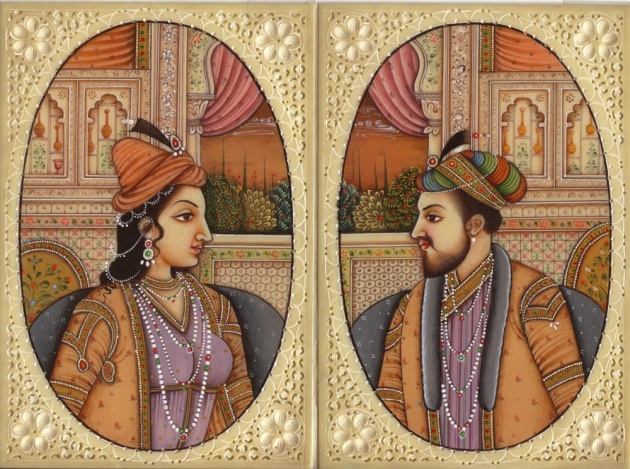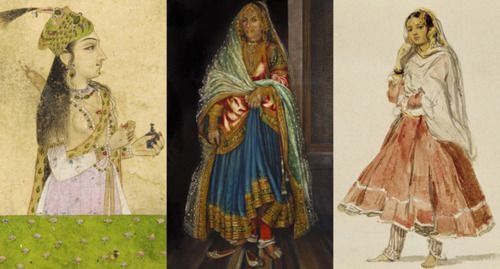Anarkali and Salim: A Mughal Love Story
Emperor Akbar was so enamoured of her ravishing beauty that he named her “Anarkali”, meaning “pomegranate blossom”, for her flushing red complexion.”
There is a mausoleum in the south of Lahore’s Old City, a site of immense speculation and mystery, and, if rumours of 1611 are to be believed, the only remaining sign of a bitter argument between father and son. The mausoleum is an elegant octagonal white-washed stone building with 8 corner turrets, each topped with a domed kiosk, a masterpiece of solid masonry work of the early Mughal period.
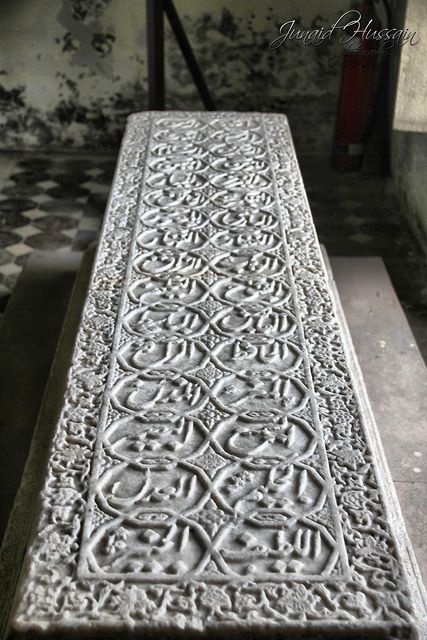
In the mausoleum sits an extraordinarily beautiful sarcophagus, a tomb of pure marble and exquisite workmanship, “one of the finest pieces of carving in the world”, according to some 19th century scholars. This tomb is the final resting place of Anarkali, the protagonist of our great enigma, one half of our 17th century royal romance riddle, and the point where all the threads start to unravel.
On the sarcophagus are etched the 99 names of Allah. Two years, namely Hijra 1008 and 1024, are also inscribed, which correspond to AD 1599-1600 and AD 1615-1616 respectively. On the northern face of the sarcophagus is the following inscription, written in Persian:
Ta qayamat shukr goyam kard gar khwish ra
Ah! gar man baz beenam rui yar khwish ra
“Ah ! If could I behold the face of my beloved once more;
I would give thanks unto my God
Unto the day of resurrection”
Accompanying this eternal profession of love and passion is the inscription Majnun Salim Akbar which can be translated as “The profoundly enamoured Salim (son of) Akbar”.
And so the plot thickens.
Key Players
There are three main characters in this love story.
Anarkali
Crown Prince Salim; Future Emperor Jahangir (1569 – 1627)
Emperor Akbar (1542 – 1605)
The Mughal-e-Azam Version
The most popular version of Anarkali and Salim’s illicit love story was immortalized in one of Bollywood’s greatest epics, Mughal-e-Azam (1960), “The Emperor of the Mughals”. Mughal-e-Azam was the highest-grossing film of its time and is popularly regarded today as the greatest Bollywood film of all time.
(I’ve seen it at least 3 times; my father, while waiting for his tea to boil, still drums out the tune to “Pyar kiya to darna kya”, a song that’s become a popular way of laughing off romance-related woes.)
Dilip Kumar as Prince Salim; Madhubala as Anarkali in Mughal-e-Azam (1960)
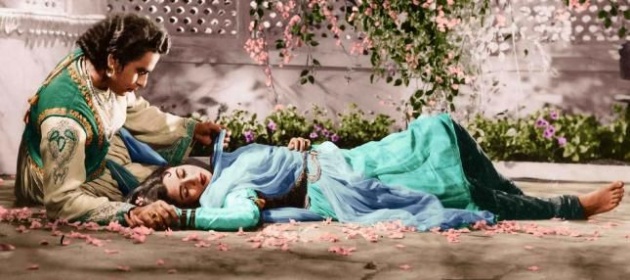
Dilip Kumar as Prince Salim; Madhubala as Anarkali in Mughal-e-Azam (1960)
According to this version of the royal romance, popularised by the Bollywood movie, Anarkali’s real name was Nadira Begum. Originally of Turkmen origin, Nadira came to Lahore with a traders’ caravan. She held a mujra (dance performance) in the court of Emperor Akbar, where the latter was so enamoured of her ravishing beauty that he renamed her “Anarkali”, meaning “pomegranate blossom”, for her flushing red complexion.

Emperor Akbar’s eldest and heir apparent, Prince Salim, fell in love with Anarkali, but his father did not approve of the relations between the two. The dancer was of low birth and not fit to be the queen of the future emperor of Hindustan. The lovers ignored Emperor Akbar’s disapproval and continued to meet clandestinely. Unable to punish his own son, Akbar took his wrath out on Anarkali and sentenced her to death by being bricked alive in a wall.

(In the 1960 movie, because Indian audiences can hardly bear to see heroines die, Emperor Akbar releases Anarkali at the last minute, in exchange for banishment from the kingdom. Which really wouldn’t explain the tomb in Lahore at all. Or fit with the personality of an Emperor. But never mind all these glaring discrepancies, because I don’t buy this version at all.)
The Version Where Anarkali is Killed Over A Smile
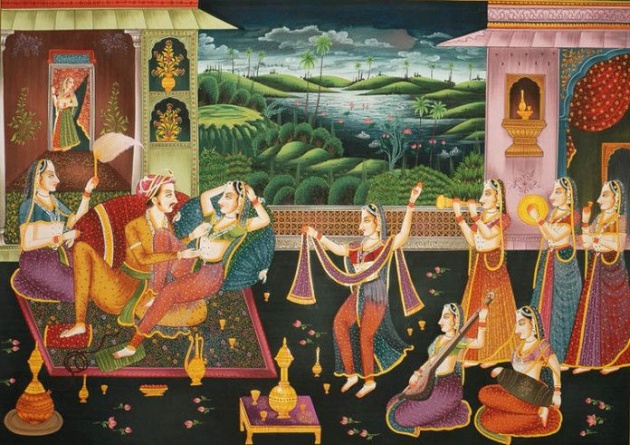
A Mughal harem in the miniature style of the time.
A Mughal harem in the miniature style of the time.
So, the rumour in the walled city of Lahore was that Emperor Akbar had a special liking for Anarkali, as she was well-versed in poetry, literature and music, all of which were dear to the emperor.
She was admitted into the Mughal harem and became a concubine of the emperor’s. It was a well-known fact that the entire court knew Anarkali was the emperor’s “most favoured person”.
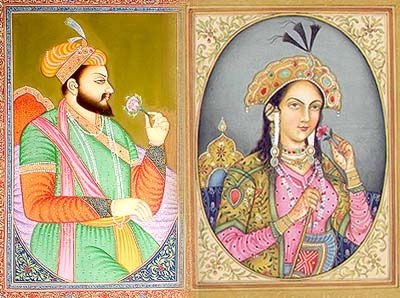
One day, while seated in a room lined with mirrors, Emperor Akbar noticed Anarkali returning Prince Salim a smile. Akbar, who knew the character of his sensuous son better than anybody else, was outraged by the suspicion of an affair between the crown prince and his own slave girl.
In fact, Akbar was so infuriated that he ordered her to be built alive into a wall. After all, if word got out that his concubine was sleeping with his own son, the Shehenshah-e-Hindustan (King of Kings of Hindustan) would become the laughing stock of his own land. Salim, unable to save her from this cruel end, commissioned a tomb to her memory in Lahore after his accession to the throne
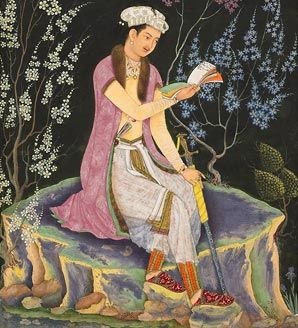 .
.
(This is more in keeping with the personality of an emperor, and Akbar did have a reputation for arrogance. Besides being a delicate nest of politics, a royal harem is, after all, a symbolic manifestation of the Emperor’s libido, and hence his “manliness”.)
The Semi-Incestuous Version
The earliest mention in historical record of the love affair between Anarkali and Prince Salim comes from the account of one William Finch, an English merchant who arrived in India in 1608, 3 years after Prince Salim ascends the throne as Emperor Jahangir.
